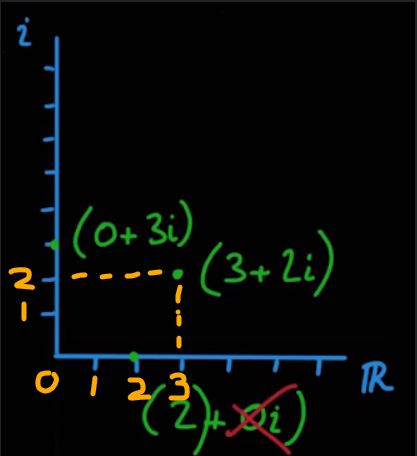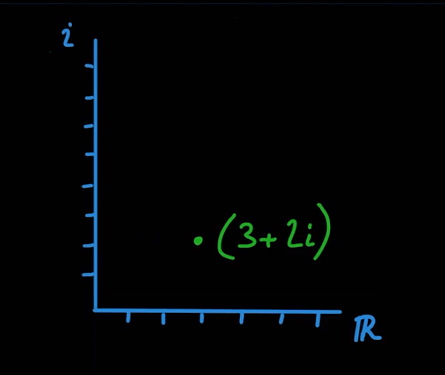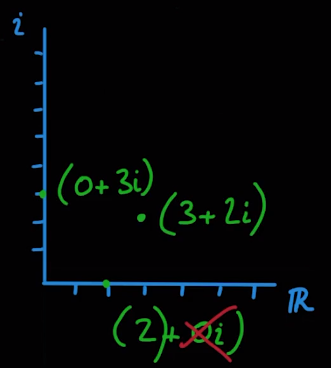Both axes are extending from zero and the three points shown are completely unrelated examples that are being used to show how you might graph any complex number on the complex plane (including purely real numbers).
The three points are at:
- 3 + 2i or (3, 2)
- 2 + 0i or (2, 0)
- 0 + 3i or (0, 3)
The two points that are directly on the axes at 2 + 0i and 0 + 3i are there to show how we don’t have to fully specify the complex number if one of the elements is zero.
For example, the number 2 + 0i can be shortened to just 2, since the additional information about the 0i component doesn’t provide us with any useful information - if the component is missing, we know it must be equal to zero.
Here’s an annotate graph to clearly show the labeled axes for the point at 3 + 2i:

I hope that clears things up for you but, if not, please do let me know.





